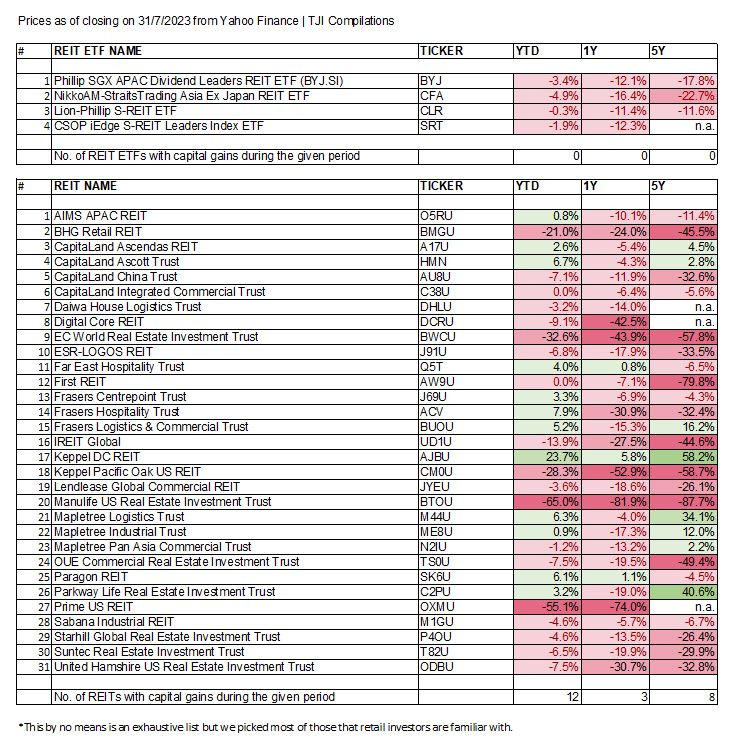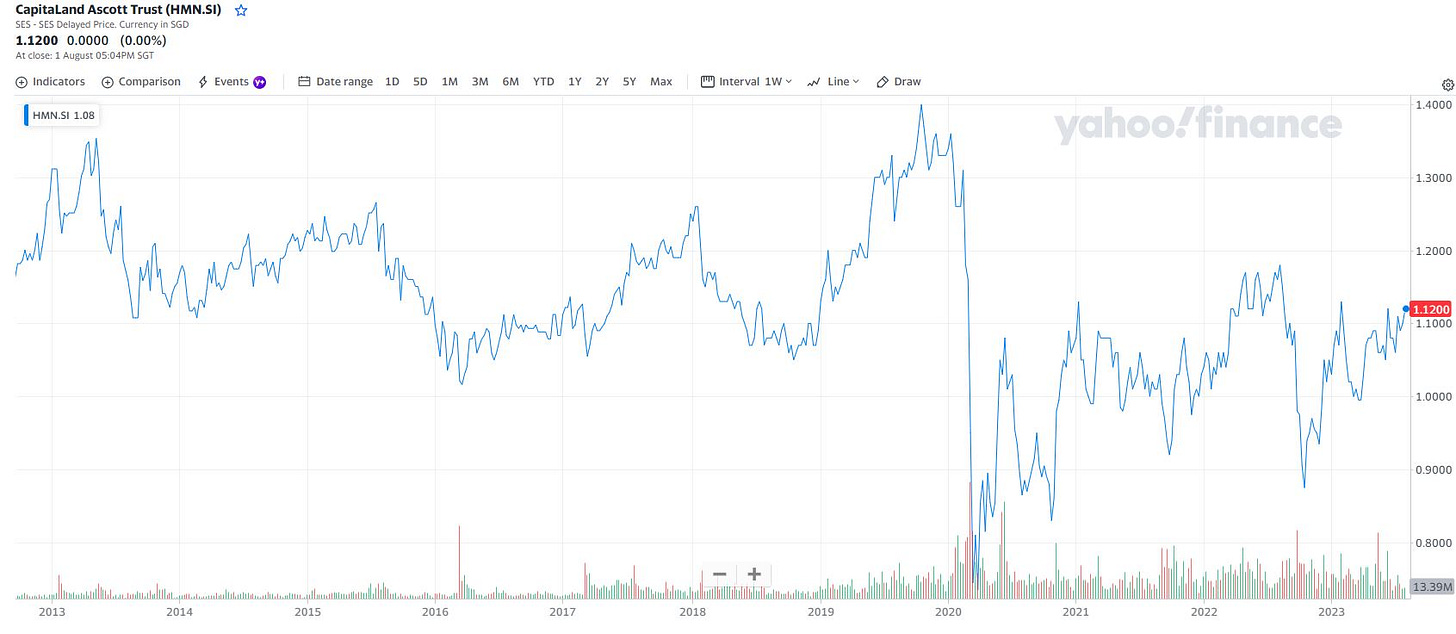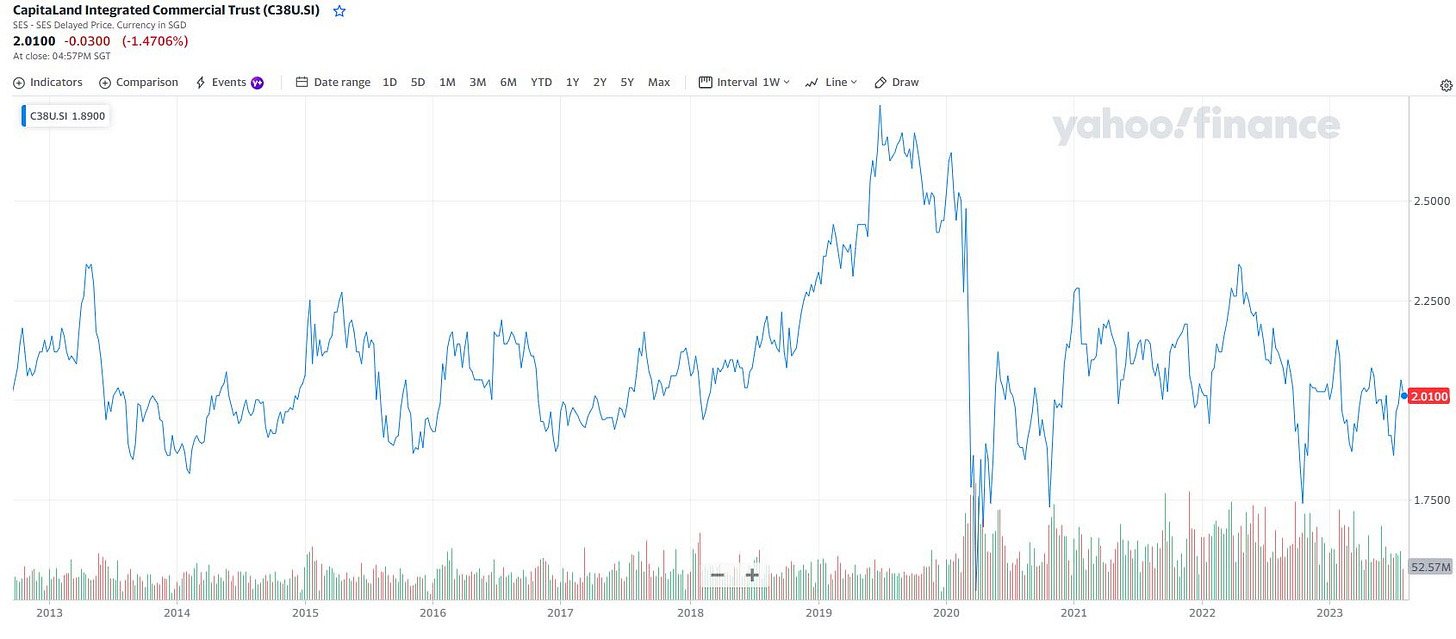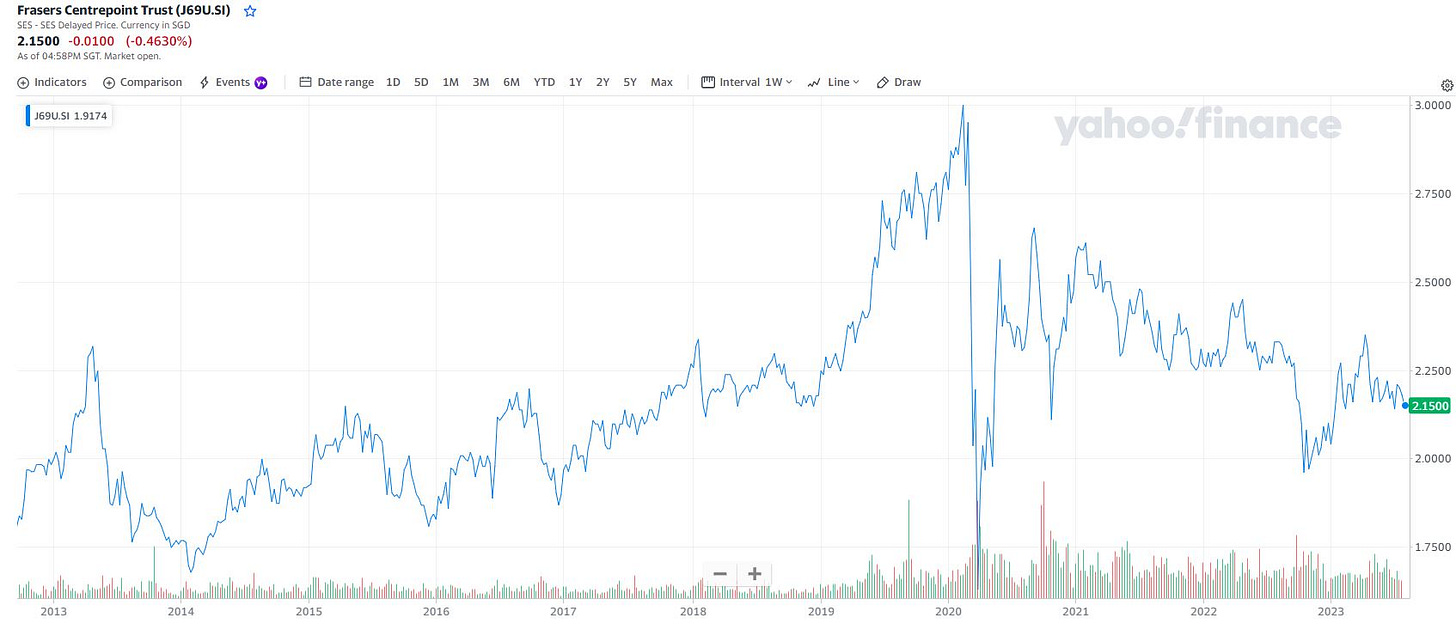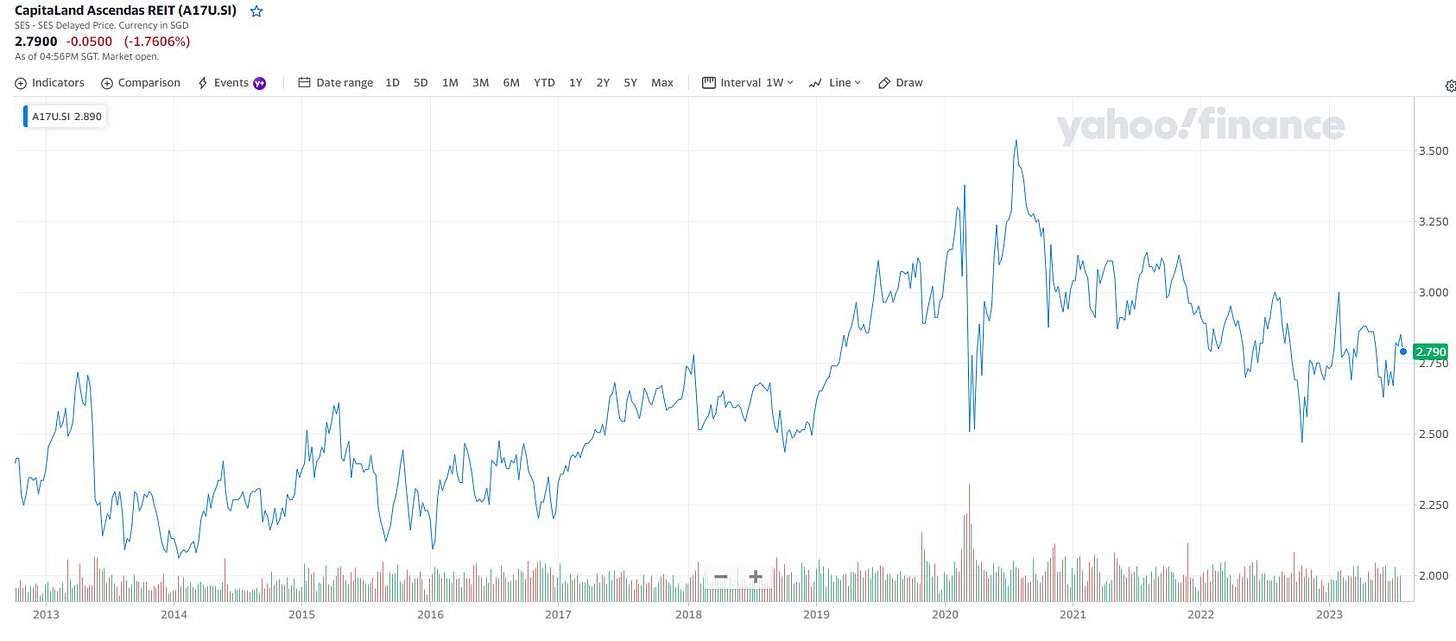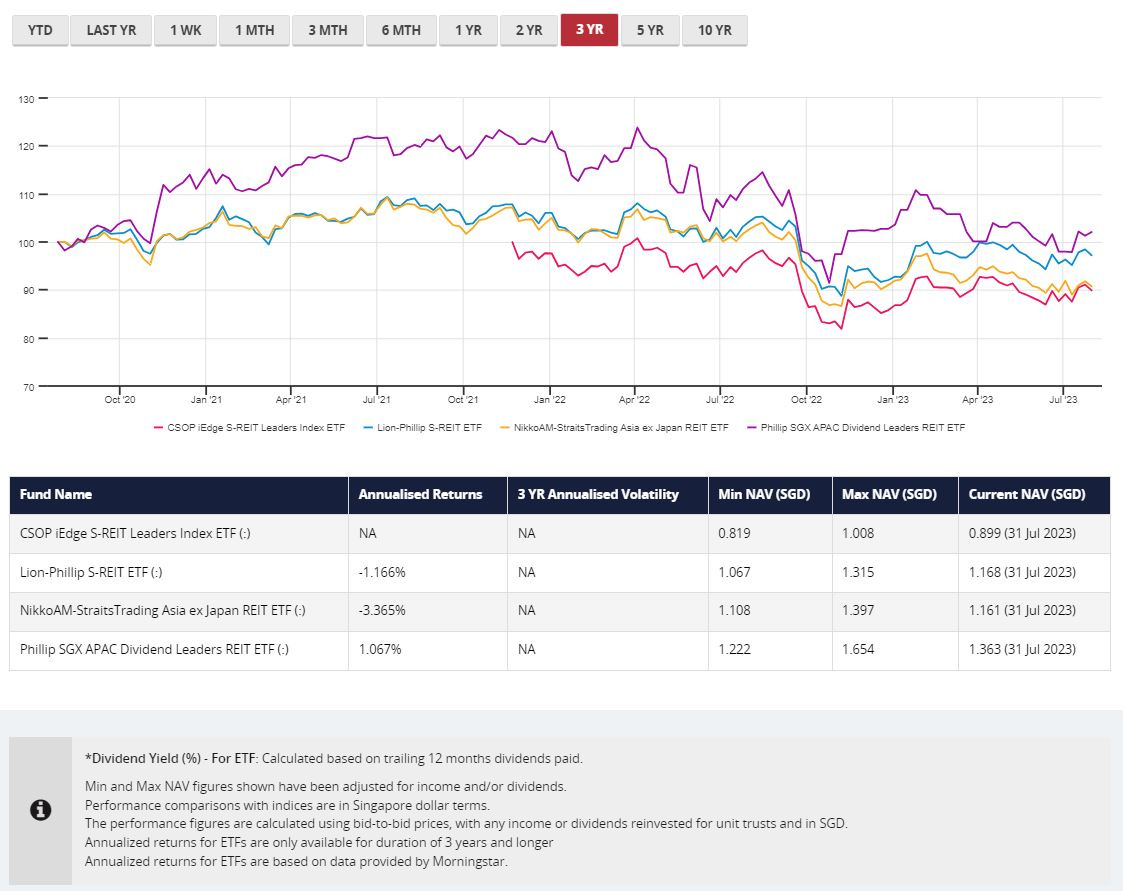Are REITs supposed to be stable, safe investments?
REITs have traditionally been seen as a safe haven during periods of volatility and uncertainty. Much has also been spoken about the glamorous side of dividend investing on how investors have managed to retire with six digit dividends in their pocket every year. This article will instead highlight some hard truths about REITs investing. While we are proponents of dividend investing as part of our FIRE journey ourselves, we also wish to touch on areas that are less spoken about to raise awareness for investors who are looking to approach income investing. (Watch: The Untold Truths Of Income Investing)
For the uninitiated, REITs are a form of property investing where they allow investors to benefit from the rental income that are made up of commercial properties such as retail malls, offices, industrial parks, hotels and healthcare facilities. At low transaction cost and only a minimum requirement of 100 shares to be bought each time, it is easily accessible for most investors including young graduates. (If you are totally new to REITs, you can read on getting started on dividend investing or watch this video to learn more about what dividend investing is about. We’ve also previously written about how to generate passive income with dividends in Singapore).
But what many investors don’t realize is that REITs are basically traded just like stocks. And as REITs get increasingly popular over the last decade, they become increasingly correlated to the broader stock markets. REITs investing has long been touted as a stable and safe manner for people who are seeking dividend income. For something to be considered stable and safe, apart from having a reliable income regularly, it is implied to most investors that the value of the investments itself should not fluctuate that much, especially on the downside.
Or to give an analogy, this would mean that if today I own a property, I would want to be getting constant income from my tenant while knowing that the property value of my home stays roughly the same so that in the event I need to dispose off the property, I would not be suffering from much capital loss.
Sharing some Opinions that Retail Investors have on REITs:
After conducting workshops on REITs investing for participants who are relatively new to REITs and speaking to many of them, one misconception that we often hear is that REITs are perfect for investors who are more risk averse and are suitable for those who do not wish to be locked-in with any specific time frame. As opposed to the typical or growth stocks, REITs are less volatile and supposedly help us to sleep better at night. 😴
When we probe further, the reasons why most investors have such a perception of REITs are because they read from investment blogs or from finance YouTubers that REITs are a safe way to get passive income without doing anything. It does not help that Robo advisors or investment platforms portray such to be the case. While it is true that it is a passive way of getting income, there are many other considerations that one should be mindful of when thinking of investing in REITs which is rarely ever covered by the financial media.
Let’s dive into the actual performances:
At this juncture, let us be factual and take a look at what has happened so far for S-REITs investors who only got their feet wet not too long ago or for investors who have been invested longer like say a 5 years horizon. For ease of convenience, let us use 3 time frames- year to date, 1 year and 5 years which we can easily pull these figures out from Yahoo Finance. I would love to include 10 years too, but Yahoo Finance doesn’t have this quick option so let’s just leave it for now.
In fact we think it is actually a good time to see how REITs as an asset class have performed during these time frames which interestingly includes the period of the recent bear market. For something to be considered “stable and safe”, the best time to look at them is to see how they can hold up during the bad times. In a bull market, generally a rising tide often lifts all boats (including things which are not even productive assets 😅). Anyone investing into anything can make lots of money anyway in good times.
For this exercise, we will examine some of the trending Singapore REITs ETFs and individual REITs that many retail investors have been talking about on investing forums or may have been investing in.
The table below is a compilation of the price performances as of the closing price on 31st July 2023:
So here are some interesting observations with the respective time frames:
Year-to-date Performance:
Let us start from year to date performances from 1st January 2023 to 31st July 2023. This is a period where most REITs stop crashing further, are generally range bound and consolidating.
Let’s begin with REIT ETFs which typically are made up of the stronger REITs. Generally they are either close to flat or down by a low single digit percent. For individual REITs, we have a mixed bag of results but the poor performing ones are really bad.
1-Year Performance:
Next, let us look at the 1 year performance (from 1 August 2022 to 31 July 2023) which roughly coincides with when the most recent bear markets roughly began.
For the REIT ETFs, they were all down by double digits percentages.
Phillip SGX APAC Dividend Leaders REIT ETF (BYJ.SI) was down 11.8% for the last 1 year.
NikkoAM-StraitsTrading Asia Ex Japan REIT ETF (CFA.SI) is down 16.3% for the last 1 year.
Lion-Phillip S-REIT ETF (CLR.SI) is down 11.5% for the last 1 year.
CSOP iEdge S-REIT Leaders Index ETF (SRT.SI) is down 12.3% for the last 1 year.
And with that, obviously the underlying REITs must have performed just as bad which you can look at them yourself.
Some dividend investors who are new to investing may not have thought that they would be seeing such numbers. 😱 And what would have been likely is that many of them would have capitulated and crystallized their losses as the market went down. This is especially true for those who were leveraged or are investing with money they need in the short term, resulting in “weak hands” behavior.
By now, some of you may say, we should never judge an investment just by its 1-year performance. That’s true of course. Especially at a period where we are simply in a bear market! 🐻 But remember, the whole point of this article is simply to highlight what has factually happened in terms of price performances to determine if REITs are indeed a stable and safe instrument to invest in during different market conditions, and is less about a debate on whether REITs are a good long term investment. No doubt the good REITs will be here to stay and to get even stronger with time, but it is important for investors to appreciate what can and will happen again to REITs when the bad times eventually come along.
5-Years Performance:
Moving on, let’s look into the 5 year performance dating back from 31 July 2023. (Some ETFs/REITs have yet to reach the 5-year mark and hence there is no available data)
Surprise. Surprise. All of the REITs ETF here registered a bigger double digit negative price return.
Similarly, with the exception of a small handful of individual REITs that gave some solid results, the majority are nothing short of disappointment.
(Of course, if that’s not enough, we can always go further in time like 10 years or so and without doing too much work, we will see that most REITs have peaked out somewhere in early 2013. With the exception of a few outliers like Parkway Life REIT and those of the Mapletree families, if an investor had bought close to that peak, it would still have been possible to be making a capital loss for some of the other well-loved REITs like CapitaLand Ascott Trust, CapitaLand Integrated Commercial Trust and Frasers Centrepoint Trust after holding for 10 years. For CapitaLand Ascendas REIT, currently it is only hovering slightly just above the 2013 highs too.)
Wait A Minute, What If We Look At Total Returns?
Now at this stage, some may argue, so far we are just looking at the prices of the REITs without factoring the dividends received during this period. It is only fair to look at the returns in totality including dividends reinvested. Ok fair, so let us allow for dividends to be reinvested which will now elevate the overall performance. For simplicity, we can just look at the REITs ETF for a 3 and a 5 year time horizon.
And what do we see? In terms of annualized returns, it is a really low single digit which if you average out among the REITs ETFs which is almost going nowhere. So if an investor has been on this for 3 or 5 years, he is back to square one. And it might not have been easy to sleep well for some throughout this journey thus far. So even if we factor in the dividends received, it only helps marginally.
Why Lump Sum? How About DCA?
Now, maybe some smart alec may argue, dollar cost averaging could have yielded a better result. So far, we have been doing the above calculations by assuming an investor has been making a straight off lump-sum investment at the start without topping up regularly which many investors will do. Okay, let’s see where dollar cost averaging will take us to.
For this, we actually don’t even have to do the math to guess if dollar cost averaging would have helped. At the way the charts have been moving in this case, the best thing to do was in fact to have a lump sum investment done exactly 3 or 5 years back as opposed to slowly accumulating on a monthly or quarterly basis because the majority of all other price points during these periods (with the exception of the brief Covid crash) would have resulted in higher purchase prices with a higher weighted average cost as compared to simply doing a lump sum investment at the onset.
So by now, you can understand some of the pain that these investors have been going through and what they initially were sold to was everything that was not. REITs have lost their appeal to some of these investors as a stable and safe investment. Dollar cost averaging was supposed to work until it didn't. And if the value of your investments collapse at a time when you may need money the most, you can’t say that these instruments are safe and highly liquid. Being liquid for an investment is more useful if it has been profitable.
(And by the way, our calculations above are also not yet factoring the other platform fees or charges that may be imposed by their brokerages or robo advisors. Imagine paying for all these fees for such an outcome like above.)
We Tell You What You Need To Hear, Not What You Want To Hear:
We hope that by now, we have managed to shed some light to wannabe income investors who still think that REITs are a simple and easy way to get passive income at the click of a button. Or that being highly liquid, investors can “easily” get out of this whole thing should they wish to stop their passive income.
This warrants attention because some investors only have an investment time horizon of 15-20 years to retirement. Not everyone has the luxury of starting to invest in their twenties. Some investors may only start to invest in their 40s and are looking to retire by age 55-65. If their money is still going nowhere in the first 5-10 years, then they are banking on the fact that the markets must do well for the remaining years or that they will be left high and dry.
So is there any Use Case for REITs for Retirement?
So can we finally rest our case to conclude that REITs are not the stable and safe instruments they have been perceived as? Probably, but not for a select group of investors. To these investors, they can surely see REITs as a stable and safe investments based on their objectives. These people tend to be very long term investors that are not perturbed by these price fluctuations because what they are after are only the dividends. They may not even be looking to sell off their REITs in the foreseeable future. For them, as long as they continue to get their dividend payout consistently, they can absolutely see REITs as a stable and safe way to get regular income with capital gains or losses as less of a concern.
Hence, a fairer concluding statement is to say that dividends itself can be largely stable (with the exception of extreme situations like Covid as some may recall) but the same cannot be said for the price of the REIT. The price stability of a REIT is comparable to that of the growth stocks during bad times such as during the Covid-crash, interest rate hikes or geopolitical tensions.
REITs, just like other stocks, require more deliberate thinking and prudent evaluation during purchase and sale. Unless you belong to the group that is solely focused on collecting dividends because you already have a substantial portfolio, for most people it is simply not enough to be collecting yields without any regard for capital loss. Success in REITs comes easily when executed correctly, but investing in the less ideal ones, or even the right ones at an inopportune moment, can result in squandered time.
Hence, for those who have followed us for some years, you would know that we have been a great fan of REITs, but only for the right ones and at the right prices. This is what we believe in at The Joyful Investors and that is how we build our income portfolio. You may also see our year-to-date portfolio performance here.
In short, the construction of a REITs portfolio is essential to provide us with the passive income and the freedom to do the things we want while being mindful of the downside risks.
Better Your Investment Journey With Us
Being in touch with reality is one key thing in order to be joyfully invested for the long haul. The earlier you are aware of these financial truths, the faster you can get your act together to work towards your financial freedom.
The facts presented in this article can be a bitter pill to swallow but I think you would rather be told earlier than later. Most investors, from our experience, would in no way regard an instrument to be safe and stable if there is the possibility of having to wait for more than 3-5 years to just regain the capital outlay after investing. The problem is that none of them contemplated such a possibility because they were never told.
As practitioners ourselves, we try to be as forthcoming as we can, just like the one we did on the KWEB saga sometime back. But our most reserved comments are usually during closed door events among our inner community where they really get to learn the ins and outs of what really goes on in the financial markets in order to thrive well as an investor. You can learn more here for our upcoming REITs workshops and events. You may also get more regular insights into the markets with us on our public Telegram channel.
Separately, our next in-person event is at InvestFair 2023, held at Suntec Exhibition Hall 403 on 12th August, which The Joyful Investors will touch on how we can achieve financial freedom joyfully and also on 13th August where we share how investors can better navigate the ever-increasing volatile markets. You may get your tickets here.



